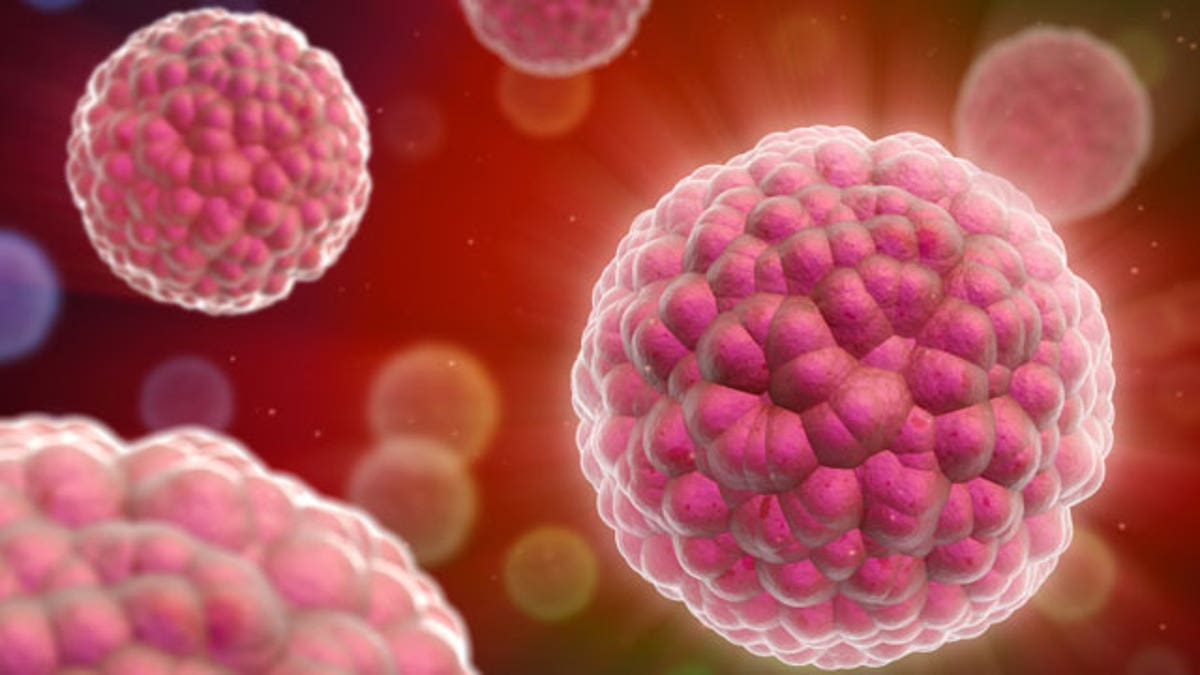
In a new study, researchers have shown that an innovative technique— the use of DNA microcircles— has the potential to detect a broad range of cancers in the earliest stages by forcing tumors to create a unique protein.
The proof-of-principal study from Stanford University Medical School used DNA microcircles, a customized genetic construct consisting of tiny rings of DNA. After injecting the microcircles into mice, researchers used a blood test to show that mice with tumors produced a substance that tumor-free mice did not.
With this approach, researchers are reversing the typical laboratory method of detecting cancer, senior study author Sanjiv “Sam” Gambhir, professor and chair of radiology and director of the Canary Center at Stanford for Cancer Early Detection, told FoxNews.com. With blood and urine tests, doctors must depend on detecting biomarkers that the tumor itself makes.
“The challenge for those kinds of biomarkers is that they’re rarely very specific and often not made in sufficient quantities,” Gambhir said.
For example, early detection of prostate cancer using prostate-specific antigen (PSA) is controversial because the biomarker is made even in normal prostate cells. Also, small tumors of any kind in the body may generate quantities of biomarkers that are too low to detect in blood or urine.
On the other hand, DNA minicircles work by forcing tumors to make something— a protein— that it otherwise wouldn’t to detect the presence of cancer.
“We flip the problem around. [You’re] no longer dependent on nature to make a molecule that’s unique to cancer. You’re given a pill that forces cancer cells to make the molecule for you,” Gambhir said.
For the purposes of their animal trial, Gambhir noted that a cancerous tumor one cubic millimeter in size, equal to about a grain of rice, would be detectable. For context, when a woman feels a mass in her breast, by the time she’s able to feel it, it’s about a cubic centimeter in size. While researchers have yet to conduct trials with human participants, Gambhir said he hopes minicircles will be able to help detect early and stage 1 cancer.
The DNA minicircles, which are comprised of tiny rings of DNA, work by going into a cancer cell and turning on the cell’s machinery to make RNA. The RNA then makes protein, which in this case is secreted embryonic alkaline phosphatase (SEAP), which then serves as a cancer biomarker. While the microcircles infiltrate all cells in the body, healthy cells do not make SEAP because researchers added a “switch,” called a surviving promotor, that only activates in cancer cells. After minicircles are introduced to the body, the surviving promoter activates within about 48 hours to create SEAP. Eventually, the minicircles degrade and in about two weeks are no longer in the body.
Researchers say the minicircles are advantageous because they don’t integrate with the host genome, which means they won’t tamper with a healthy cell’s DNA.
"It stays by itself and doesn't like other genes,” Gambhir said.
Minicircles are the minimal piece of DNA needed to trigger protein creation. Another option, plasmids, have been used to put genes in cells but may bring foreign DNA.
Because the study’s minicircles initiate the creation of SEAP, which the body recognizes from fetal development, it is not detected as foreign and therefore does not trigger an immune response. Plus, SEAP— which is only made by the cancer cells— is easy to detect in blood.
“[We] hijacked concepts, if you will, and wanted to make cancer cells use something they don’t normally, with no immune response, and safely. That’s why minicircles making SEAP is at the heart of this,” Gambhir said.
Gambhir noted that DNA microcircles can be designed to make any type of protein, and researchers may not ultimately end up using SEAP but that the proof of concept is the most important finding in their study. Minicircles were developed recently at Stanford for use in gene therapy.
Researchers hope that, for clinical use, a patient could take a pill with minicircles at home, wait about two days to allow them to enter all the body’s cells, then do a finger prick blood test to detect SEAP.
“If you saw no SEAP in the blood, there’s a pretty good bet that there’s no cancer cells of any significant quantity hidden in your body,” Gambhir said.
While researchers believe the minicircles detection method will be convenient and effective, it has yet to be proved how many would be needed to be effective in humans— and if it would work at all.
However, the technology is less than five to 10 years away from clinical use, Gambhir said. After first refining the process, researchers plan to test minicircles in adults with large tumors then those with smaller tumors to ensure the detection of known tumors.
“Data show that over the next 20 years, one in every two people will get some kind of cancer in their lifetime, mainly because people are living longer, so eventually minicircles can be used in low-risk [populations],” he said. “That’s a pretty high bar. I’d be happier if we proved it in a high-risk population then hopefully we get it to work [in low-risk groups].”
